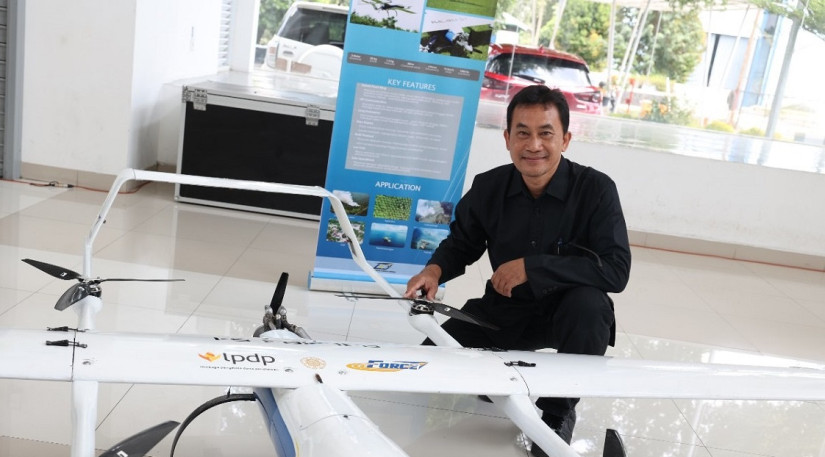
Professor Selo, the Dean of the UGM Faculty of Engineering (FT UGM), has launched the Palapa S-1 Unmanned Aerial Vehicle (UAV), designed by Professor Gesang Nugroho, a lecturer at FT UGM.
This drone is intended for various purposes, such as surveillance, mapping, forest fire patrols, and disaster emergency response.
Dean Selo explained that the Palapa-S1 UAV is designed to be versatile for different applications and is currently custom-made for forest fire monitoring.
“This drone can certainly be applied to many things. The Regional Disaster Management Agency (BPBD) is one of the institutions that will utilize it because this UAV can monitor disaster situations, such as after an earthquake,” Dean Selo stated at the Engineering Research and Innovation Center (ERIC) building, FT UGM, on Tuesday (Sep. 3).
Professor Gesang Nugroho, the lead researcher, mentioned that the drone, funded by LPDP, is very efficient. It can stay airborne for six hours and has a telemetry range of up to 500 kilometers in a single flight.
“With a six-hour flight, it can map 3,500 hectares,” he said.
Professor Nugroho further emphasized that the drone can be used for various purposes, depending on the sensors it carries. It can be employed for military reconnaissance to observe enemy conditions from a distance.
Additionally, it can be used for sea patrols, plantation monitoring, mining surveillance, and more. The drone has already passed reliability tests, and it is planned to be offered to other institutions and promoted to the Indonesian Ministry of Defense.
Professor Nugroho explained that the Palapa-S1 UAV took three years to develop for research and development purposes. Since 2021, the drone has been improved to make its structure lighter and stronger, allowing for a higher payload capacity.
“This is the third year, and we’ve conducted a series of tests. Initially, the drone was intended for early forest fire detection. When a hot spot is detected, the drone will conduct fire suppression after receiving valid data,” he explained.
“During its initial development, Mr. Prabowo observed this drone. Although it had not been tested then, Mr. Prabowo said it would be utilized once tested. Now, the drone is finished, tested, and proven reliable so that UGM will engage in further discussions,” he added.
Although the Domestic Component Level (TKDN) is still at 30-40 percent, Professor Nugroho noted that it will continue to increase. The drone is ready for production and manufactured using molding techniques. Production capacity over three months can yield seven units.
The drone has undergone extensive tests in real-world environments, including aerodynamic, stability, telemetry, endurance, and mission tests.
“In principle, it can be used for anything. For military purposes, it can carry bombs or other payloads and be used accordingly,” Professor Nugroho concluded.
Author: Agung Nugroho
Photographer: Firsto
Post-editor: Afif

